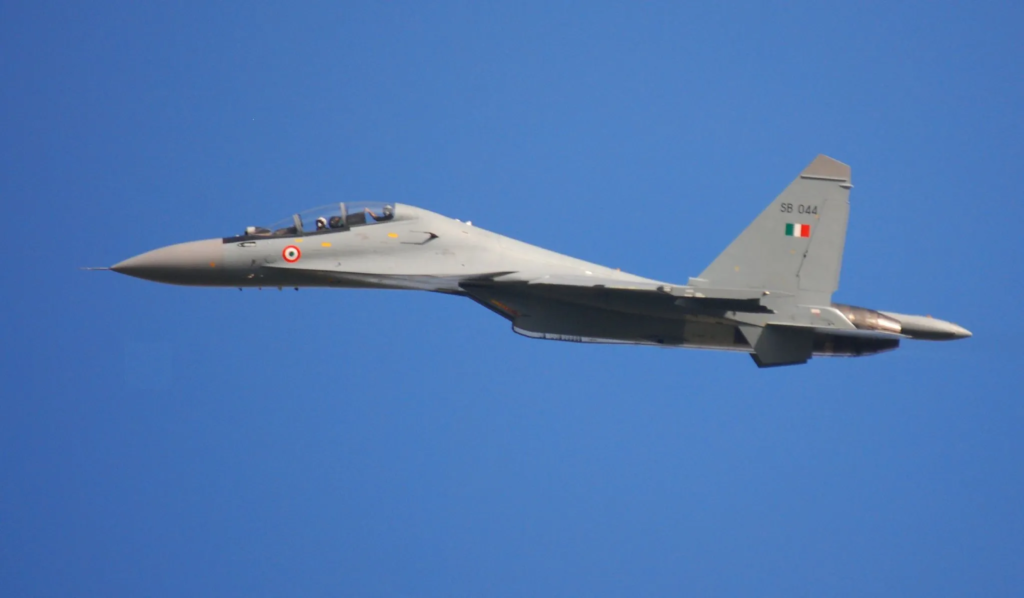- An inadvertent release of an air store from an Indian Air Force (IAF) fighter aircraft.
- Missile in question was a Rampage air Launched Ballistic Missile as per the sources.
- Aircraft in the question was a Su30 MKI
- No damage to life or property has been reported
- An enquiry by the IAF has been ordered to investigate into the incident
In a surprising turn of events, the Indian Air Force (IAF) issued a statement yesterday, confirming an incident involving the unintentional release of an air store from a fighter aircraft near the Pokhran firing range. According to the statement, the release occurred due to a technical malfunction, prompting the IAF to initiate an inquiry into the incident. Fortunately, no damage to life or property was reported.
Details of the Incident
According to sources within the Ministry of Defence, the air store in question was identified as a Rampage missile, an air-launched quasi-ballistic missile developed by Israel. The aircraft involved in the incident was a Sukhoi Su-30MKI, one of the IAF’s frontline multi-role fighter jets. The inadvertent release of such a potent weapon has raised concerns about the reliability and safety protocols surrounding these advanced munitions. IAF will not only have to doa. failure mode effect analysis but also understand root cause of the problem.
About the Rampage Missile
The Rampage missile is designed to strike high-value, well-protected targets with precision. Its quasi-ballistic nature allows it to evade enemy air defenses, making it a formidable addition to the IAF’s arsenal. However, ballistic and quasi-ballistic missiles are generally considered less reliable than other types of guided munitions due to their complex flight dynamics and the stressors involved during their trajectory.
India’s acquisition of the Rampage missile was driven by the urgent need to bolster its strike capabilities during the standoff with China. Both the Indian Air Force and the Indian Navy procured these missiles to enhance their ability to target strategic installations across difficult terrains. The Rampage was seen as a solution to the immediate operational requirements posed by the volatile situation along the Line of Actual Control (LAC).
Inquiry and Implications
The IAF’s swift decision to launch an inquiry reflects the seriousness with which the incident is being treated. The investigation will likely focus on identifying the technical malfunction that led to the missile’s release, as well as assessing the protocols in place to prevent such occurrences in the future. The incident underscores the need for rigorous testing and maintenance procedures, especially when dealing with complex and sophisticated weaponry like the Rampage missile. However, weapon malfunctioned near Pokhran and resulted in no loss of life and property indicate this was an confined area and exercise was likely evaluation sortie.
As the inquiry progresses, there will be a keen interest in the findings, particularly in terms of the reliability of air-launched ballistic missiles. The outcome could influence future procurement decisions and the operational deployment of such munitions within the IAF.
Overall, while the inadvertent release of the Rampage missile near Pokhran has fortunately not resulted in any harm, it serves as a reminder of the challenges associated with maintaining and operating advanced military technology. The IAF’s commitment to investigating the incident thoroughly will be crucial in ensuring that such incidents are minimized in the future.
